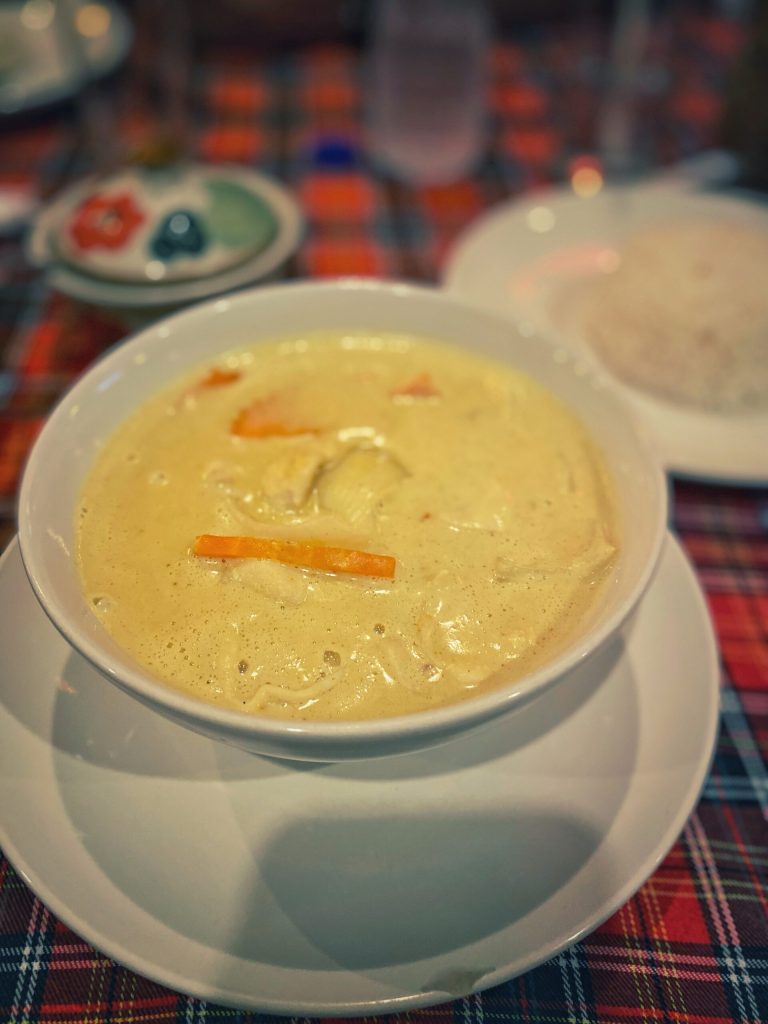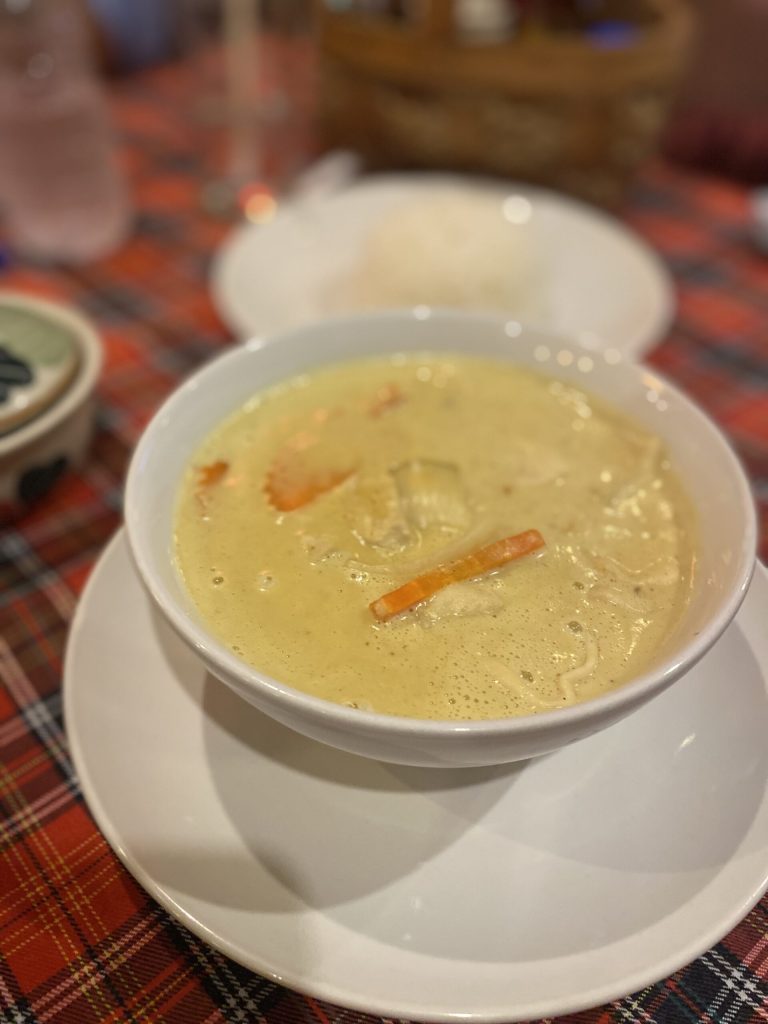The yellow curry, known in Thai as kaeng kari is based on cumin, coriander, turmeric, garlic, lemongrass, chili, galangal, kaffir lime.
An Indian-influenced curry made with spices common to Indian dishes, but less often used in Thai cuisine
It is generally milder than other Thai curries, as it contains less chili.
It is one of the three main types of Thai curry commonly found in Thai restaurants in the West.
Prepackaged curry powder of Indian origin is sometimes also referred to as yellow curry in Western countries, but it is a different spice mix from Thai yellow curry.
Thai yellow curry, outside of Thailand, usually refers to the dish kaeng kari and is usually served with chicken or beef and a starchy vegetable, most often potatoes, but it can also be made with duck, tofu, shrimp, fish, or vegetables and is eaten with steamed rice or round rice noodles known as khanom chin.
Although “kaeng” is also defined as a “watery” substance, the density of the sauce can vary greatly from that of a broth to that of a thick stew and it can also be a completely dry dish.
Representatives of dry curries are dishes that are stir-fried with a curry paste, like phat phrik khing and khua kling.
Kaeng som and keang pa are representatives of brothy curries.
Massman and kaeng khua resemble stews. Mok pla (a steamed fish curry), kaeng kradang (curry aspic of Northern Thailand) and noodle dishes like khanom chin nam ngiao are also seen as Thai curry dishes because all use curry pastes in their preparation.
This kaeng kari with chicken (Kaeng kari kai) tasted at the “The Sisters” restaurant in Koh Lanta during our trip in November 2024 (see video).

- Difficulty: Medium
- Cost: Economical
- Preparation time: 10 Minutes
- Portions: 4People
- Cooking methods: Boiling
- Cuisine: Thai
- Seasonality: All seasons
Ingredients
- 7 oz coconut milk
- 1.1 lbs chicken breast
- 4 potatoes
- 1 tsp palm sugar
- 1 tbsp fish sauce
- 1 carrot
- 1 onion
Tools
- 1 mortar
Steps
Using a mortar and pestle, pound all the ingredients one at a time, starting with the hardest and working gently until a fine, dark yellow paste is obtained.

Pour half of the coconut milk and half of the water into a pot and bring to a boil over medium-low heat, stirring to prevent sticking.
Add the curry paste. Cook for about 3 minutes over medium-low heat, stirring frequently.
Add the coconut sugar and fish sauce. Stir until the sugar dissolves, then add the chicken pieces.Cover and cook on each side for about 5 minutes over high heat.
Lower the heat to a minimum and cook the chicken for about 30 minutes.
When the chicken is slightly colored and well cooked, add the other half of the coconut milk and the water. Bring to a boil, then add the potatoes, carrot, and onion. Add some water if necessary to just cover the ingredients.
Cook for about 10 minutes or until the potatoes are tender.
Serve hot with steamed jasmine rice.
You can also buy ready-to-use yellow curry paste.
FAQ (Questions and Answers)
What does “curry” mean in Thai?
The word “curry” appears in the Thai language as “kari” (in Thai: กะหรี่), and it refers to dishes that use an Indian-style curry powder, known as phong kari in Thailand, or to the dish called kaeng kari.
Kung phat phong kari (fried shrimp with egg and curry powder) is an example of a dish using Indian-style curry powder.What is the difference between kaeng kari and kaeng luang or som?
The kaeng leuang is a sour water-based curry.
In Central Thailand, it is called kaeng luang while in the south it is called kaeng som: literally yellow curry, for the color given by turmeric, and should not be confused with yellow curry, which Thais call kaeng kari (curry with curry powder).
The yellow also comes from the use of turmeric, but that’s where the similarities end. It’s brothy because it contains no coconut milk, the main flavor is sour and it’s extremely spicy.

